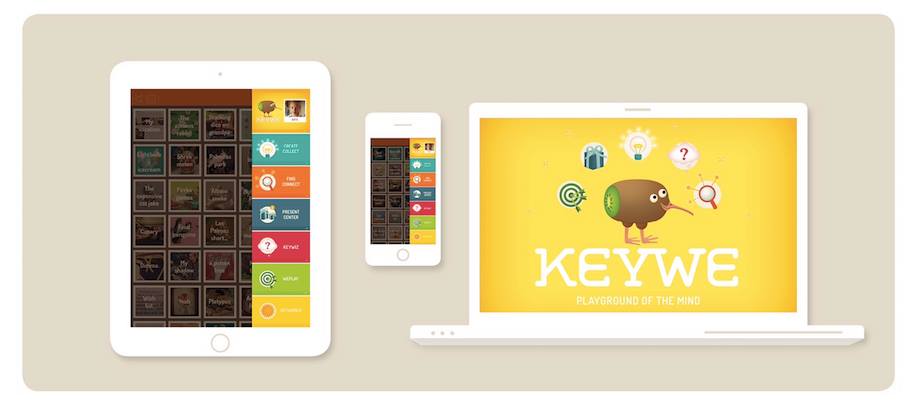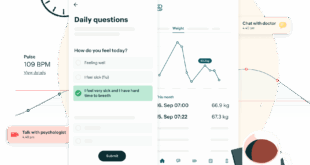Icelandic startup KeyWe is creating an app that ties together an emotional, visual, and logical approach to learning.
Olafur Stefansson and Halldor Thorsteinsson are brothers in law and co-founders of the ed-tech startup KeyWe. I’m meeting with them at the Innovation House in Seltjarnarnes, Iceland for a chat about their startup. They arrive on time. Composed and confident, with a spark in their eyes, I can tell this will be an interesting conversation. I had seen Stefansson pitch at Startup Iceland last May, where he memorably said, “Pitching is harder than playing professional handball,” and I am eager to hear more about KeyWe’s progress since then. So we get some tea and sit down with the beautiful view of Mt. Esjan and Faxaflói Bay in the background.
Stefansson started this journey around seven years ago when he was playing professional handball abroad while studying philosophy and psychology remotely. He tells me how he used to got really frustrated by not being able to keep all the knowledge he absorbed while studying and was constantly looking for ways to improve his learning techniques. He tried out different ones and settled down on one that used associations and connections to remember things. When I ask him for an example of that he tells me that he would use a scent while reading literature, so for example, every time he detected eucalyptus, his mind would go back to Halldor Laxness’s literature.
After having looked at apps like Evernote and the hashtag and visual elements of Instagram, he started working on his own solution. He would start throwing ideas back and forth with Thorsteinsson, who is a lawyer by trade, and after playing in the quarter-finals at the Olympics in London 2012 (as one does), Stefansson decided it was time to start developing the software side of KeyWe. The following year, Stefansson moved back to Iceland with his family, and development went full speed ahead. The team of two has grown into a team of five, with two programmers and a graphic designer as well as a handful of advisers in the fields of psychology, education, and operations.
What exactly Is KeyWe?
Thorsteinsson describes KeyWe as the notebook of the future. It is based on building blocks to create our own content. By adding a gamification layer KeyWe turns school projects into games based on personal data, stimuli, fast response, and brain connectivity.
“Imagine a trivia game but the questions are created from our own material in line with our cognitive connections, that is, the connections that occur in our brains,” Thorsteinsson adds.
KeyWe’s aim is to enable people to become quick thinkers. Why do we need that skill, one might ask? Stefansson argues that being able to think quick on your feet increases self confidence.
Critics of ed-tech often say that technology can never replace the human elements needed to learn. Stefansson and Thorsteinsson agree. They tell me that they don’t intend for KeyWe to replace traditional and successful ways of learning. We all have different learning styles and must choose one that best fits our needs. But KeyWe, they argue, is an important addition to the tools available to young students today and it’s not just based on Stefansson’s experience with learning. It’s actually backed by science.
The methodology behind KeyWe is based on theories about visual and relational memory, creativity, and participation. Stefansson explains it as the training of the future and tells me the story of a fireman who walks into a house that’s on fire with his troop. After they’ve managed to kill the fire, the leader has a gut feeling and clears the house. A few seconds later the floor where they were standing collapses. How did he know that it was going to collapse? He can’t explain it. It was a combination of training, experience, and intuition. Maybe it was a sound, or lack thereof, or a smell, that triggered the response in his brain. And it may, in some ways, be explained by how visual and rational memory work – they help people make connections that lead to quick and seemingly intuitive thinking or action.

One way to train the memory is by using a simulation approach with a lot of quick but short stimuli. In doing that connections that only happen in the individual mind occur, helping the person in training connect events, people, things, etc. through their own personal experiences. Creativity and participation build around that in the KeyWe learning platform, allowing the user to play around and interact throughout the learning process.
Stefansson tells me that they’re moving slowly but surely ahead. Although they’re using different academical theories they need to be sure that what they’re doing actually works. The psychologist they’re working with delivered a summary on their approach in relation to long term and short term memory and which approaches are best to improve long term memory. KeyWe ticked a lot of boxes, such as engagement, visual memory, intermittent reinforcement, and random gratification. KeyWe ties together an emotional, visual, and logical approach. After conducting a closed beta with the Hjalli schools in Iceland they launched their first MVP last October and have around 800 users so far. They have started another round of user testing within five public schools in Iceland, focusing on humanities, i.e. history, literature, etc. and are hoping to get a lot of feedback at the end of this semester, which they will use for further iterations. The timing couldn’t be better, with many schools and municipalities in Iceland and abroad implementing technology not only as tools, but also as part of their curriculum.
“We enable children to learn pretty much any subject in a constructive and fun way. That is our strength. And for the teacher – instead of him pushing one reality into 20 heads, he can use 20 realities to communicate the syllabus in real time. We’re disrupting learning with the help of students,” Thorsteinsson explains.
The teacher becomes a facilitator
Stefansson and Thorsteinsson go on to explain that by using this method, the capital of Sweden might become Helsinki, but that’s where the teacher comes in. He will always have a role as the facilitator of knowledge and as such, needs to validate the building blocks.
The new generations seem susceptible to KeyWe because they’ve grown accustomed to using technology to learn and having to respond quickly through the video games they play.
“Children’s screen time is increasing and we believe KeyWe can become a constructive video game. On a Sunday night, kids could decide to play their own game created from their own experiences and while they do that they’re preparing for a test or a class on Monday. In the future you’ll be able to play with your friends within your network and the games will become more versatile,” Stefansson adds.
KeyWe has been mostly self funded with the exception of a two year grant of €99,000 from the Technology Development Fund in Iceland. Stefansson and Thorsteinsson share with me that they’ve started preparing for a round of funding next year, but the size and timing of the round will depend on how the user testing goes.
“The change has already started happening. This is what the future looks like. We’ve only taken the first few steps towards that future,” Stefansson concludes.
 Nordic Startup News Early Stage Startup News From The Nordics
Nordic Startup News Early Stage Startup News From The Nordics


